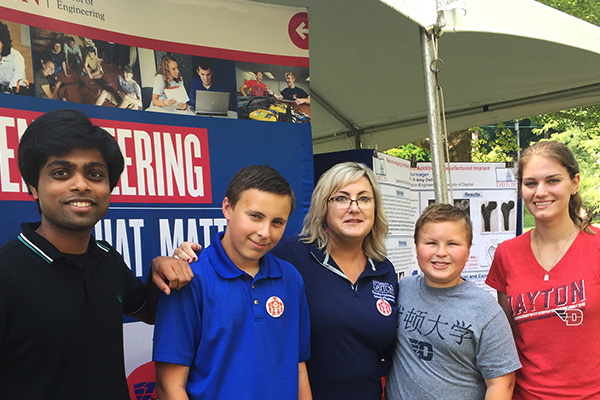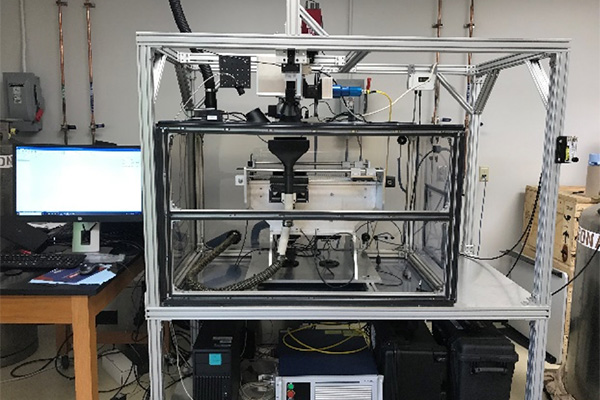Dayton Engineer

Image to Implant
Imagine you’re in need of a hip replacement – and your surgeon had the ability to turn a CT scan of your hip joint into a custom, 3-D printed implant. Your new hip bone would be made from strong, biocompatible materials, like titanium, and designed to mimic the lattice structure inside natural bone. This smart implant would encourage bone in-growth and resist infection.
According to Dr. Amy Neidhard-Doll, a biomedical engineer at the University of Dayton, all of those things may be possible within the next 10 years. At the University of Dayton, a unique set of resources has come together to advance research on additively manufactured medical devices like hip implants.
Over the summer, Neidhard-Doll partnered with Dr. Dathan Erdahl and the University of Dayton Research Institute’s (UDRI) nondestructive engineering group to pilot the printing of personalized implants.
UDRI has considerable expertise in additive manufacturing and the testing of finished parts, mostly for military applications. Erdahl’s group has built an open architecture 3-D printing platform — the DART SLM — that allows researchers to customize the printer’s use of materials and monitor printing progress using a variety of sophisticated sensors.
“UDRI’s expertise and state-of-the-art printing platform for metals lend themselves perfectly to expanding into biomedical research,” Neidhard-Doll said. “They were interested in partnering with the School of Engineering to bring someone with a biomedical background into the team.”
In addition to her interest in capitalizing on newly developed UDRI technologies, Neidhard-Doll wanted to engage student researchers. Monica Yeager, a senior electrical engineering major, spent the summer writing image processing code to stitch patient CT image slices back together to create a 3-D model of a hip implant. The model was then 3D-printed as a prototype.
What’s next? UD researchers Neidhard-Doll and Erdahl will seek FDA approval of the DART SLM machine, which is required before clinical trials of medical devices will be allowed. They will also begin tests using biocompatible metals such as titanium. Future research will focus on optimizing the manufacturing process for commercial applications to bring this technology to market.


